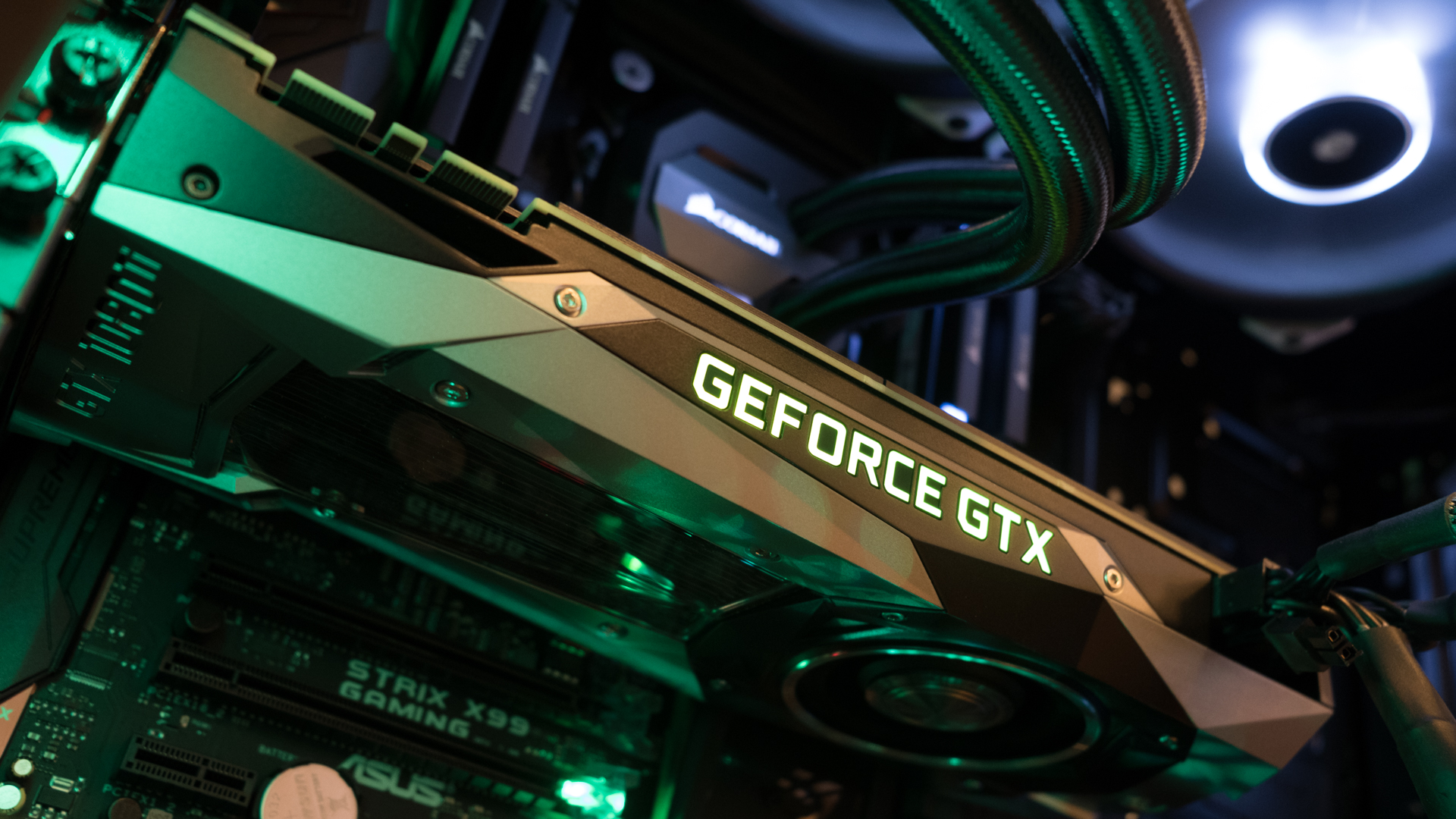GTX 1660 Ti models from Gigabyte and MSI spotted

More fuel has been added to the fire in terms of the rumors that Nvidia does indeed have a GeForce GTX 1660 Ti in the pipeline, with listings for various models of such a graphics card from Gigabyte and MSI having been spotted at the EEC website.
The EEC is the Eurasian Economic Commission – a regulatory body of the union between Russia and Armenia, Belarus, Kazakhstan, along with Kyrgyzstan – and Videocardz pointed out the following listings for Gigabyte GPUs:
- GV-N166TAORUS-6GD
- GV-N166TGAMING OC-6GD
- GV-N166TWF2OC-6GD
- GV-N166TOC-6GD
- GV-N166TIXOC-6GD
- GV-N166TGAMINGOC PRO
- GV-N166TGAMINGOC WHITE
- GV-N166TGAMING-6GD
- GV-N166TWF2-6GD
- GV-N166TD5-6GD
- GV-N166TIX-6GD
As you can see, these refer to ‘Aorus’ and ‘Gaming’ models, as well as ‘OC’ (overclocked) and ‘Pro’ spins on the cards, and also WindForce (‘WF’).
They shape up pretty much as expected, and these are all along the lines of existing Gigabyte products like the GV-N2070WF3-8GC, which is the firm’s current GeForce RTX 2070 WindForce with 8GB of video RAM (so the 6 at the end of the 1660 Ti GPUs denotes 6GB of on-board memory, as rumored).
Furthermore, the following MSI models were spotted, with a more straightforward naming scheme:
- MSI GeForce GTX 1660 Ti GAMING Z 6G
- MSI GeForce GTX 1660 Ti ARMOR 6G OC
- MSI GeForce GTX 1660 Ti VENTUS XS 6G OC
- MSI GeForce GTX 1660 Ti GAMING X 6G
Weight of evidence
This is the most solid slab of evidence we’ve seen yet that a GTX 1660 Ti is indeed on the way from Nvidia, as incoming hardware products are quite often spotted in EEC listings online, and there are a broad range of authentic sounding models covered here across two GPU vendors.
Indeed, the sheer weight of all this evidence is growing now, and it seems rather more likely that the GPU is imminent, and that the name – which we were always taking with a hefty pinch of salt – might just be on the money after all.
Sign up for breaking news, reviews, opinion, top tech deals, and more.
Why the odd seeming GTX 1660 Ti moniker? Confusion abounds on that score, and the truth is no one really knows, although some chatter that we’ve seen online has suggested Nvidia might be looking to remind folks of the GeForce GTX 660 Ti. The latter was a popular card which hit the sweet spot of price, performance and power consumption when it came to GPUs back in the Kepler days. Well, it’s as good a theory as any…
At any rate, speculation points to a February 15 launch for the GTX 1660 Ti. The GPU rumor mill also insists that Nvidia will follow up this card with a vanilla GTX 1660, and a GTX 1650, all of which are intended to be cheaper options for those who don’t want to fork out a lot of cash for an RTX model.
These GTX Turing spins are supposedly based on a TU116 GPU with 1,536 CUDA cores, and won’t have the ray tracing chops seen on the RTX cards, with pricing allegedly set to be pitched at $279 (around £210, AU$390) for the GTX 1660 Ti.
The theory continues that the GTX 1660 will drop the asking price to $229 (around £175, AU$320), and the GTX 1650 will be pitched at $179 (around £135, AU$250). Although even the rumor peddlers admitted that those prices could change before launch.
Further evidence of the existence of the 1660 Ti include a leaked photo of an alleged Nvidia pre-briefing event for third-party graphics card manufacturers, and a benchmark which was spotted that shows the GPU could be around 20% faster than a GTX 1060.
Before we get too carried away, however, it’s still worth underlining that nothing is certain here, and all this remains in the domain of speculation. Still, with the purported launch only a couple of weeks away, we haven’t got long to wait to find out the truth.
- These are the best graphics cards of 2019
Darren is a freelancer writing news and features for TechRadar (and occasionally T3) across a broad range of computing topics including CPUs, GPUs, various other hardware, VPNs, antivirus and more. He has written about tech for the best part of three decades, and writes books in his spare time (his debut novel - 'I Know What You Did Last Supper' - was published by Hachette UK in 2013).